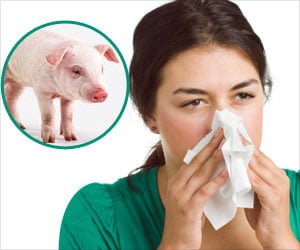New study suggests that 15 seconds of hand rubbing could be just as effective as the 30-second application at reducing bacteria.
Hand hygiene compliance could be improved by using alcohol-based hand rub for 15-seconds with a simple three-step technique that is as effective in reducing bacteria as the 30-second application with a six-step technique recommended by WHO. The findings of the study are presented at the European Congress of Clinical Microbiology & Infectious Diseases.//
Hand hygiene is the single most effective thing healthcare workers can do to reduce the spread of infectious diseases, but there is limited evidence on which technique is most effective.
TOP INSIGHT
The heavy workload and time pressure experienced by healthcare workers may decrease the hand hygiene standards. Hence, shortening hand rubbing time with simple technique could be a safe alternative to fit into their busy routine and could enhance the overall quality of hand hygiene performance.
Read More..
WHO recommends a six-step 'how to hand rub' technique for using alcohol-based hand rub. However, adherence to all six steps is low and previous research indicates that a simplified three-step hand rub technique is superior to the six-step technique in terms of compliance and killing bacteria.
The current recommended application time for hand rubs is 30 seconds. However, recent research suggests that 15 seconds of hand rubbing could be just as effective at reducing bacteria. [3]
In this randomized cross-over trial, Dr. Sarah Tschudin-Sutter and colleagues from University Hospital Basel, Switzerland investigated combining the simpler three-step technique with a shorter application time of 15 seconds.
Twenty healthy volunteers (aged 18 to 51 years) were randomly assigned to rub their hands by following four different techniques the six-step hand hygiene technique for 30 seconds; the six-step hand hygiene technique for 15 seconds; the three-step hand hygiene technique for 30 seconds; and the three-step hand hygiene technique for 15 seconds. Because this was a randomized crossover trial, each participant was assigned to all four groups.
Results showed that a shorter application time of 15-second rubs was as effective at reducing bacterial counts on the hands of participants compared to the recommended 30-second hand rub, irrespective of the hand hygiene technique.
"The time pressure and heavy workload experienced by healthcare workers reduce compliance with hand hygiene standards. Our findings suggest that shortening hand rubbing time and simplifying the technique for the use of hand rub could be a safe alternative that is easier to fit into their busy routine, could enhance the overall quality of hand hygiene performance, and have a positive effect on adherence", says Professor Tschudin-Sutter.
"Further studies are needed to validate the performance of the shorter application time in everyday clinical practice."
The authors point to several limitations, the most important being that the study assesses the efficacy of the two different hand hygiene techniques and two different application times in an experimental setting, so the results cannot be extrapolated to a clinical setting. They also note that they measured the reduction of bacterial counts. Therefore conclusions cannot be made about the impact of different hand hygiene techniques on the transmission of pathogens.
Source-Eurekalert

 MEDINDIA
MEDINDIA



 Email
Email




